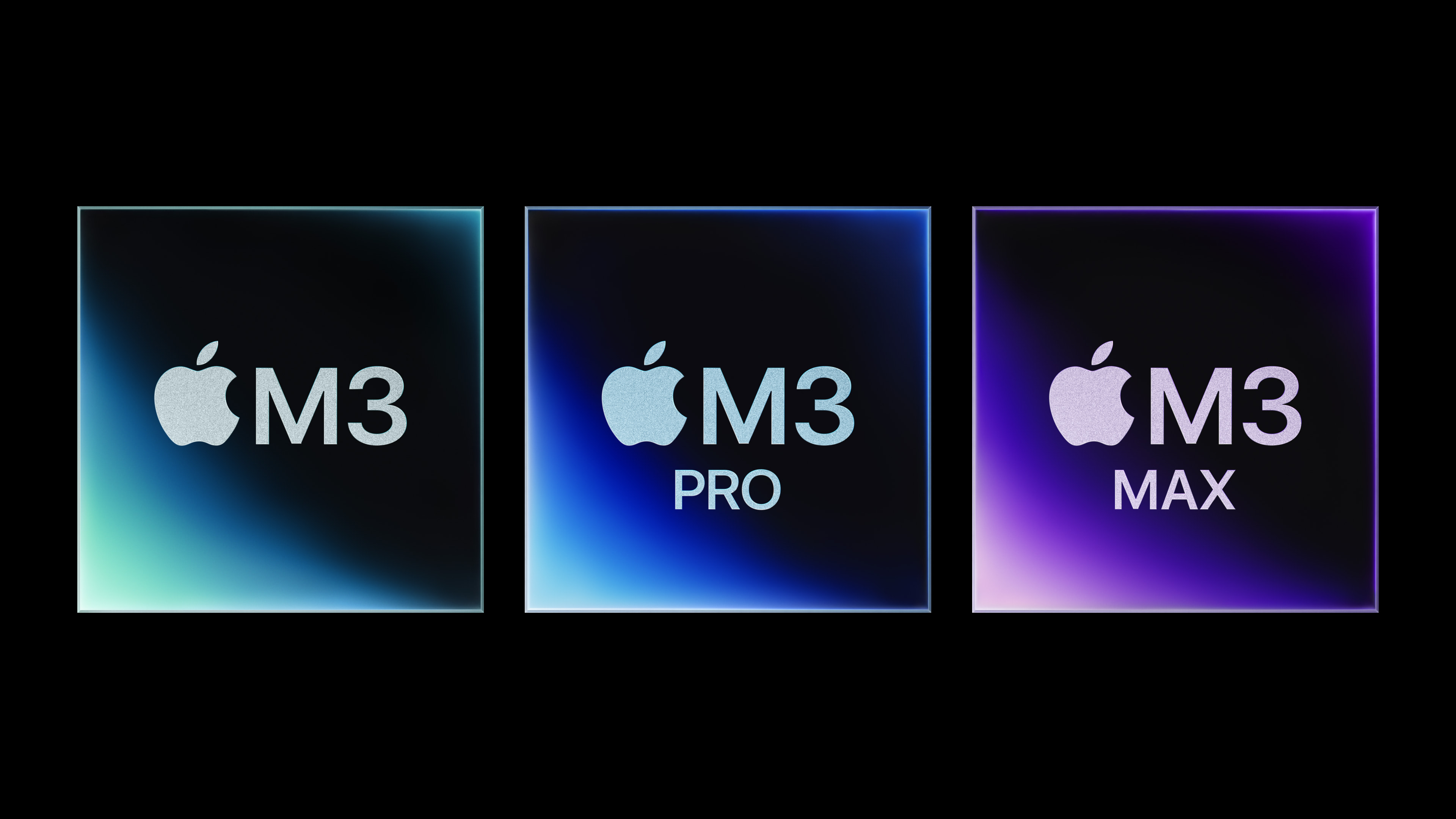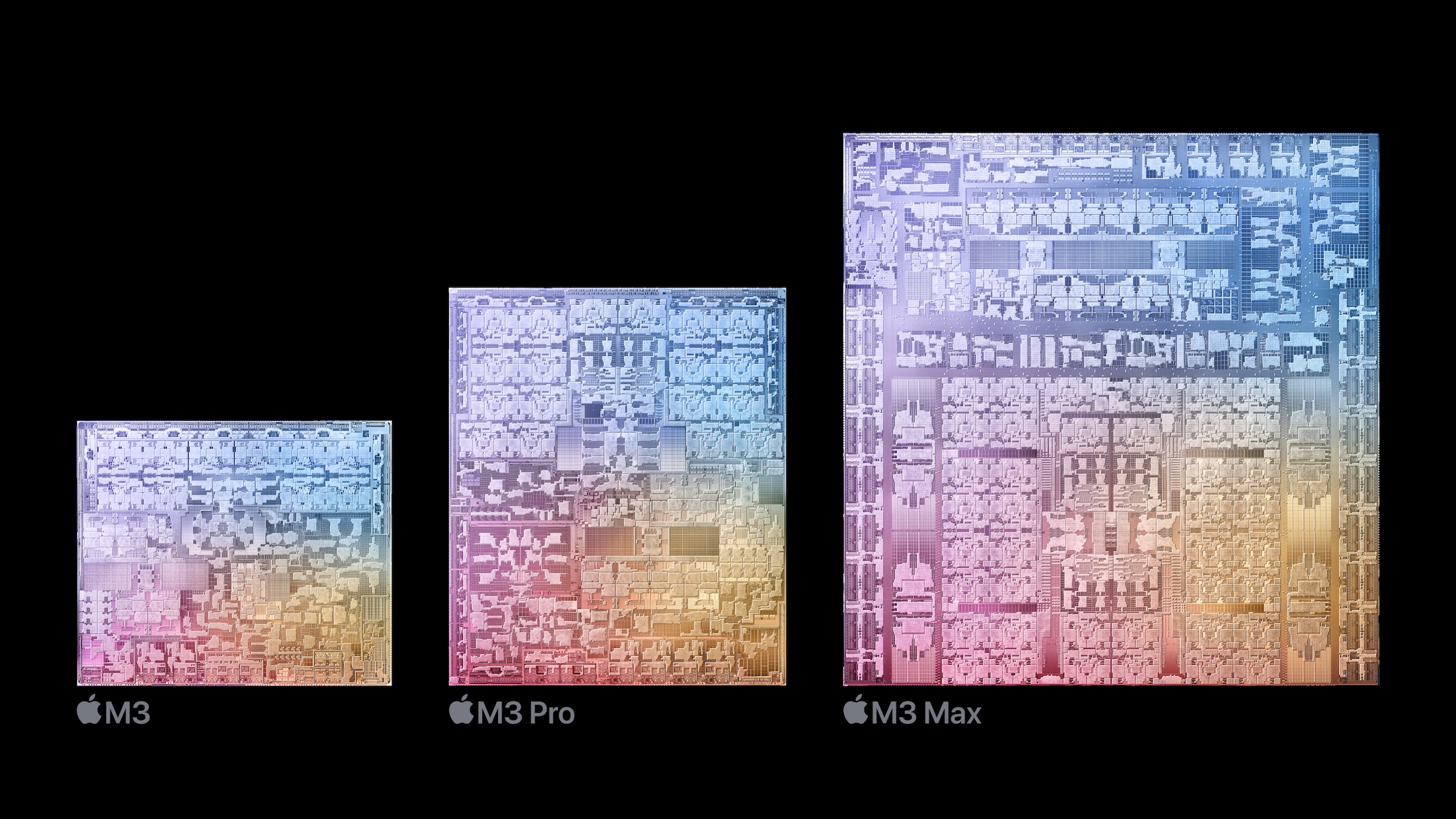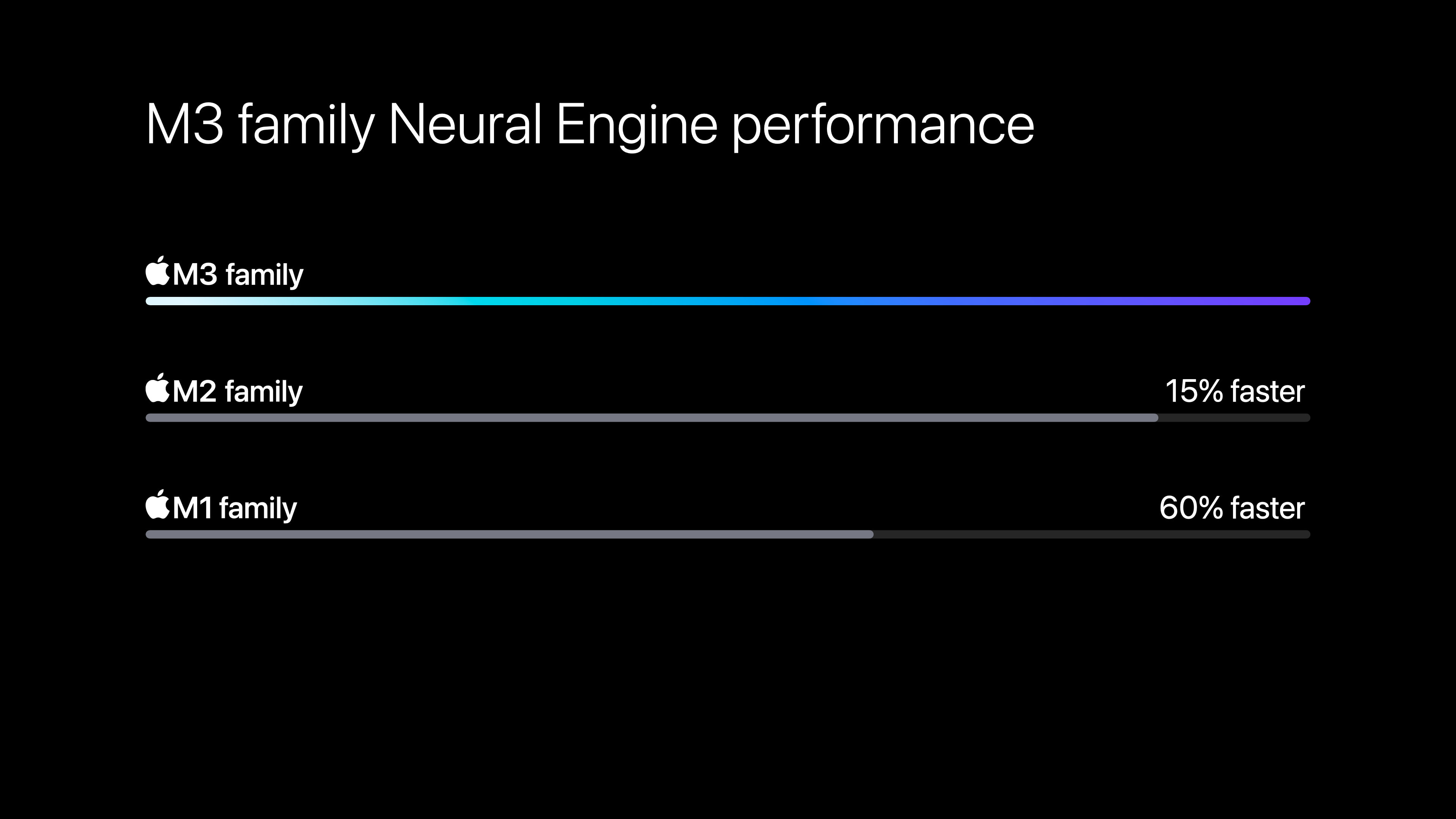A16 wasn't a massive jump over A15. There's nothing to be curious about there.
Got a tip for us?
Let us know
Become a MacRumors Supporter for $50/year with no ads, ability to filter front page stories, and private forums.
Apple Silicon Buyer's Guide: Which Chip Should You Choose?
- Thread starter MacRumors
- Start date
- Sort by reaction score
You are using an out of date browser. It may not display this or other websites correctly.
You should upgrade or use an alternative browser.
You should upgrade or use an alternative browser.
I am concerned about the heat. My MBP used to remain nice and cool and silent 100% of the time. Since 2021, certain activity that was easy for it and caused no heat before, will now cause it to spin up the fan to high as it gets to those super hot nuclear temps. Honestly I think the code in some software now intentionally directs the chips to throttle, heat up and slow down processes to convince people it’s time for a replacement. My MBP did not start using the fan at all until 2021. Truly, the 1st time the fan spun up, it shocked me because I forgot that my MBP actually had a fan - I had not ever heard it run before. I thought something was broken.
While some it might be due to SW getting "heavier", I doubt that is all.
Your fans were spinning before, just at a lower RPM you didn't notice. Every spinning fan will suck in dust, so after 8 years it is almost certain that there is some buildup.
to mac rumors
this is a very good article
helped me to distiguish between the chips
this is a very good article
helped me to distiguish between the chips
Here is an overview of the Apple Silicon chip. Indeed, we have come a very long way. 🥹
I want an M2 iMac tho. 🖥️
View attachment 2229525
For some reason, my replies to this user are being deleted without mods even telling me (!!!).
For the sake of readability of this forum, I think we would all welcome that you stopped with this nonsensical, cyclical, never-ending "how about feature X in product Y?" topic (obsession?) in EVERY.SINGLE.MACRUMORS.ARTICLE.
THANK YOU.
Now read the definition of "ultra". Makes sense, doesn't it?The definition of "maximum" is "as great, high, or intense as possible or permitted" and yet Apple went and added one designation above that.
That will only be true once M3 is actually available to users. The M2 line is literally the definition of current tech.And they're all outdated because they're not the M3.
I'm still waiting on the G5 Powerbook to upgrade.Could you also include a picture of the PowerPC in the graphic? We are still buying these too:
View attachment 2229538
On Chip or not, it is still relevant to deciding what machine to get since the upgrades did come with the M2.Thanks for that. I thought WiFi and Bluetooth were on-chip, but apparently they are not. I guess Apple builds WiFi 6E and Bluetooth 5.3 separately on to the newer boxes.
The upgrades were only cosmetic, I'm afraid.On Chip or not, it is still relevant to deciding what machine to get since the upgrades did come with the M2.
-- Sent from my ChatGPT app
high-performance raindrops and energy-efficient breeze?Hopefully the M3 will come with less hazardous cores.
Or high-performance Daybreak and energy-efficient Nightfall.high-performance raindrops and energy-efficient breeze?
I do think the naming approaches the 'good, better, best' scheme most companies like to do quite well (which is good for consumers because it is simple).Aside from Max sounding like the plural of Mac, the naming actually makes sense.
At this point I'd say if you can get a still brand new M1 get it. What Apple has always needed, many think, is an affordable entry computer that is still powerful enough to justify the premium. They finally have that.
Until a big jump like external graphics support, unless you need more memory than the M1 can support it should be fine for anyone who doesn’t know they need more.
The only thing I do not get is 'Max', it is confusing for its similarity to Mac but even more so because 'Max' in other products just means 'bigger'.
Personally I think a pretty sane naming scheme would be M<N>, Plus, Pro, Ultra.
However, that also doesn't work well anymore because of the iPhone Plus (which for some reason is then called Max when it is a Pro version?)
I am sure their marketing guys could think of a naming scheme that would just replace 'Max' with something more appropriate though.
In my opinion, the M2 is “based” on the A16 instead of A15.
In other words, the A16 is the base chip of the M2 chip design.
M2 CPU cores are "Avalanche" and "Blizzard", same as the A15 and they are are both fab'ed on TSMC's N5P process.
The A16 CPU cores are "Everest" and "Sawtooth" and is produced on the N4P process.
Let's just hope M3 cores are based off A17, otherwise, we won't see a huge performance increase if it based off A16.
Fantastic!! I need this article because I soon will replace my Intel Mac with M-series. I think this article is helping me decide to go with an M2 Pro mini or M2 Max studio. I will have to keep accessing my needs before deciding.
My Mac Studio with M1 Max (10-core CPU, 32-core GPU, 16-core Neural Engine, 64GB unified memory) is a beast. Abode Illustrator will load a file with easily 2000 vector lines in about 5 seconds... there's ZERO lag on Illustrator, regardless what I do. I have yet to install the newest version of AutoCAD made for Apple Silicon, but I'm assuming the performance is going to be on par with Illustrator, which will be fantastic, as AutoCAD is very graphics intensive (even when only doing 2D).
Comment deletedMy Mac Studio with M1 Max (10-core CPU, 32-core GPU, 16-core Neural Engine, 64GB unified memory) is a beast. Abode Illustrator will load a file with easily 2000 vector lines in about 5 seconds... there's ZERO lag on Illustrator, regardless what I do. I have yet to install the newest version of AutoCAD made for Apple Silicon, but I'm assuming the performance is going to be on par with Illustrator, which will be fantastic, as AutoCAD is very graphics intensive (even when only doing 2D).
Last edited:
Right now I'm leaning toward the M2 Max. I've heard that the M1 Max is very capable and buying one would save me some money rather than buying M2 Max. Thanks for your review.My Mac Studio with M1 Max (10-core CPU, 32-core GPU, 16-core Neural Engine, 64GB unified memory) is a beast. Abode Illustrator will load a file with easily 2000 vector lines in about 5 seconds... there's ZERO lag on Illustrator, regardless what I do. I have yet to install the newest version of AutoCAD made for Apple Silicon, but I'm assuming the performance is going to be on par with Illustrator, which will be fantastic, as AutoCAD is very graphics intensive (even when only doing 2D).
Looks like this was recently updated to include the M3 family. I'm spotting an error in the chart under
For the M3 Pro, it says:
"7 or 8 high-performance cores
4 energy-efficient cores"
But that should say:
"5 or 6 high-performance cores
6 energy-efficient cores"
CPU and GPU Cores
For the M3 Pro, it says:
"7 or 8 high-performance cores
4 energy-efficient cores"
But that should say:
"5 or 6 high-performance cores
6 energy-efficient cores"
I forgot there were so many Chip names/configurations... though makes sense with all the iPads and Pencils out there.
I guess I will stick with my Intel iMac for quite a while longer as I try and decipher all this...or at minimum Apple decides it has too much clutter in the lineups.
I guess I will stick with my Intel iMac for quite a while longer as I try and decipher all this...or at minimum Apple decides it has too much clutter in the lineups.
Replacing my M1 MBP 13" It's not just that the M3 will be substantially snappier than the M1 on the web, but the hardware specs on the 14" are night and day compared to the 13" MBP & Air.
Choosing a new Mac often involves consideration of the many Apple silicon chips now on offer, so our comprehensive guide covers their generations, variations, and performance benchmarks to help you decide which is best for you.

After iterating for over a decade in the iPhone and iPad, Apple in 2020 brought its custom silicon chip technology to the Mac, enabling major performance and power efficiency improvements. Since then, Apple silicon has expanded to every Mac model, spurring new designs and capabilities that were previously impossible.

Understanding the distinctions between Apple silicon chips will help you make an informed decision when selecting the right Mac for your needs. There have been three generations of Apple silicon for the Mac, each with up to four different chip variants. The main differences between the four different chip variants are as follows:
- M1, M2, and M3: Standard Apple silicon chip with a balance of performance and power-efficiency.
- M1 Pro, M2 Pro, and M3 Pro: Apple silicon chip with additional high-performance CPU cores. The M1 Pro and M2 Pro feature twice the memory bandwidth of the M2 and M3 chips (200GB/s), while the M3 Pro features 50% more memory bandwidth than the M2 and M3 chips (150GB/s).
- M1 Max, M2 Max, and M3 Max: Doubles the GPU cores of the M1 Pro, M2 Pro, or M3 Pro and features up to twice the memory bandwidth (400GB/s) of the M1 Pro or M2 Pro chips for better graphics performance. M3 Max also adds extra CPU cores.
- M1 Ultra and M2 Ultra: Encompasses two M1 Max or M2 Max chips for double overall CPU and GPU performance, as well as twice the memory bandwidth (800GB/s).
Apple Silicon Generations
With the introduction of the M2 series of chips in 2022 and M3 series of chips in 2023, Apple made some key improvements over the initial M1 series from 2020.

The below table provides a comparison between the M1, M2, and M3 series, highlighting differences in the chips they are based on, node, CPU clock speed, Neural Engines, and more:
M1 Series M2 Series M3 Series Based on A14 Bionic chip from iPhone 12 (2020) Based on A15 Bionic chip from iPhone 13 (2021) Based on A17 Pro chip from iPhone 15 Pro (2023) 5nm node (N5) Enhanced 5nm node (N5P) 3nm node (N3B) 3.20 GHz CPU clock speed 3.49 GHz CPU clock speed 4.05 GHz CPU clock speed Neural Engine 40% faster Neural Engine 15% faster Neural Engine Video decode engine Higher-bandwidth video decode engine Support for AV1 decode New GPU architecture Dynamic Caching Hardware-accelerated ray tracing Hardware-accelerated mesh shading Image signal processor (ISP) New image signal processor (ISP) Same ISP as M2 Launched November 2020 to March 2022 Launched June 2022 to early 2024 Launched starting November 2023
The performance improvements seen with each iteration of Apple's Neural Engine is indicative of the generation-over-generation improvements that the company has been able to achieve with its custom silicon.

The standard M2 chip also features several additional changes over the M1 chip, its direct predecessor, that are worth noting:
M1 M2 68.25GB/s memory bandwidth 100GB/s memory bandwidth Media engine for hardware-accelerated H.264 and HEVC Media engine for hardware-accelerated H.264, HEVC, ProRes, and ProRes RAW ProRes encode and decode engine
All Apple silicon chips other than the M1 chip contain media engines for hardware-accelerated H.264, HEVC, ProRes, and ProRes RAW video. The M3 chip also adds support for AV1 decode.
Thanks to use of more advanced fabrication processes and larger surface areas, Apple has added more transistors to its M-series chips with each generation:
(Standard) Pro Max Ultra M1 16 billion 33.7 billion 57 billion 114 billion M2 20 billion 40 billion 67 billion 134 billion M3 25 billion 37 billion 92 billion
Devices
Each Apple silicon chip is only available in a select number of Apple devices. The standard M1 and M2 chips are present in a large number of laptop and desktop devices, several iPad models, and even the upcoming Vision Pro headset, owing to their requirement for a balance of performance and efficiency. On the other hand, the M2 Ultra, Apple's most powerful custom silicon chip to date, is only available in the high-end Mac Studio and Mac Pro... Click here to read rest of article
Article Link: Apple Silicon Buyer's Guide: Which Chip Should You Choose?
8gb of RAM would have been enough, but I wanted 16gb...still a good deal, when I compare what I get for $600 more 😊 Although would have been even better if it was $1600 for 16gb RAM 🤣
>= Max is likely also beneficial for machine learning / AI if you're working on models with a framework using GPU acceleration
For the first and third points:I'm missing the important info actually:
- Power consumption or performance per Watt, possibly broken down into CPU/GPU/ML
- Number and resolution of external displays
- WIFI/Bluetooth versions
How is that important? Most people don't need to measure their energy consumption in that much detail, and I don't think there's any cutoffs for WiFi/ Bluetooth versions.
For the second point:
Isn't that based on the computer itself? Can't the Mac mini have more displays than an MacBook Air?
Register on MacRumors! This sidebar will go away, and you'll see fewer ads.


